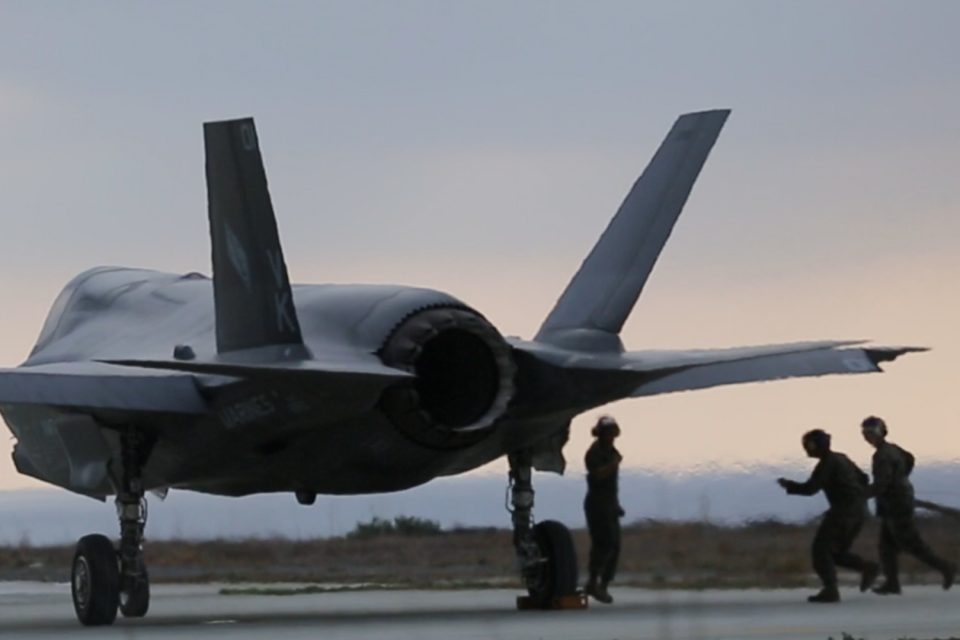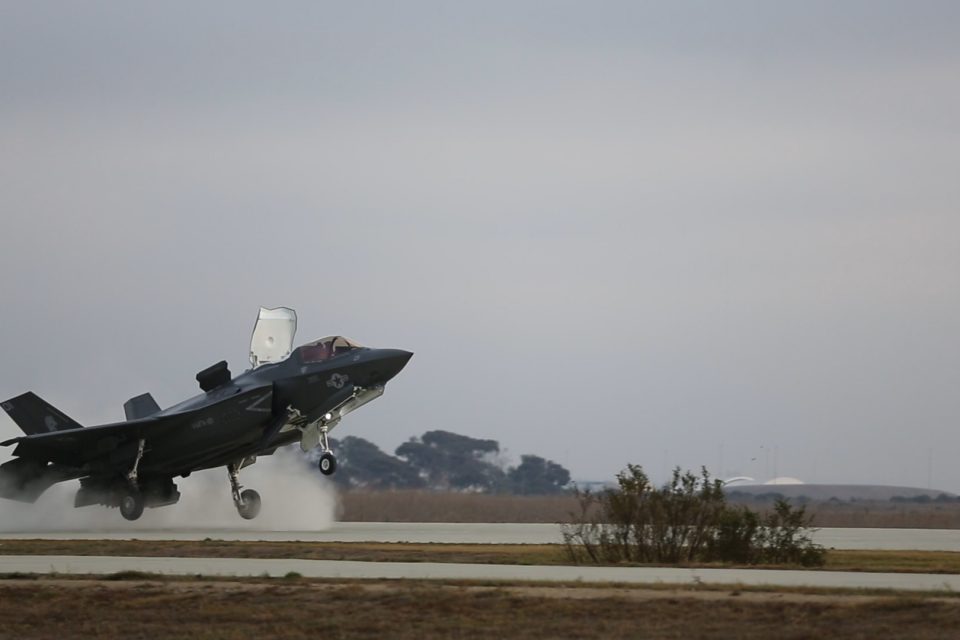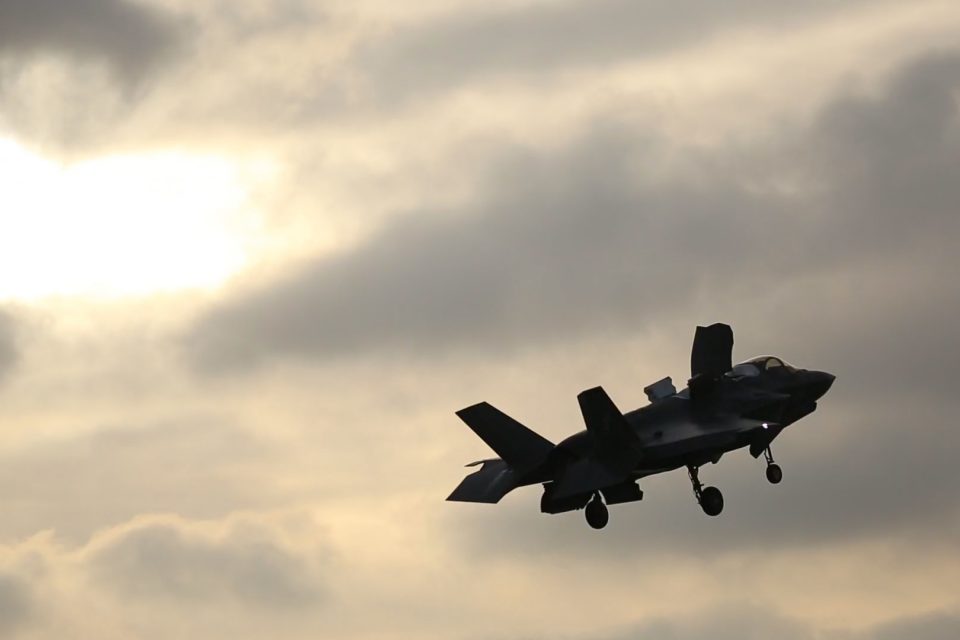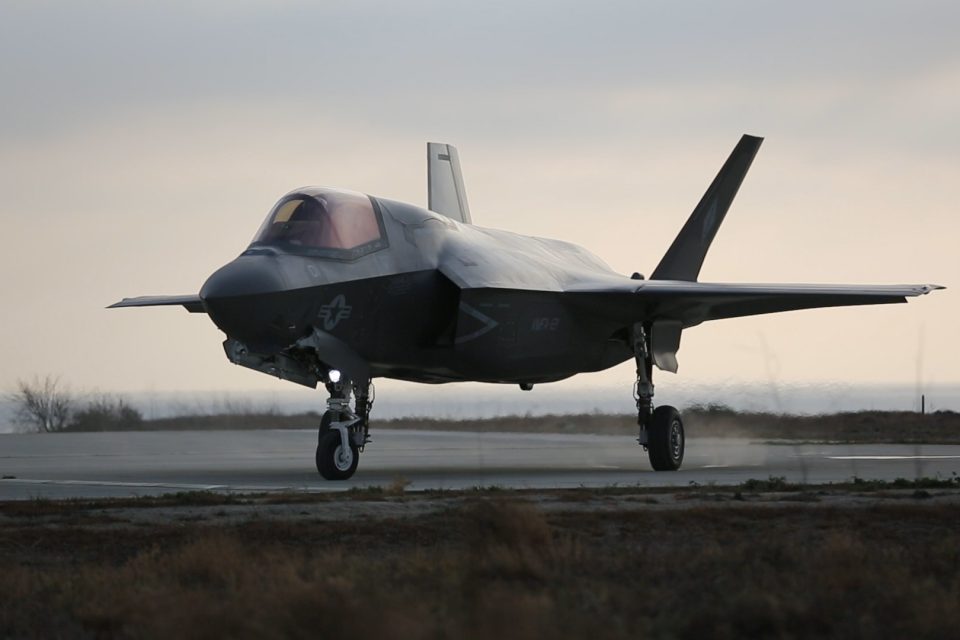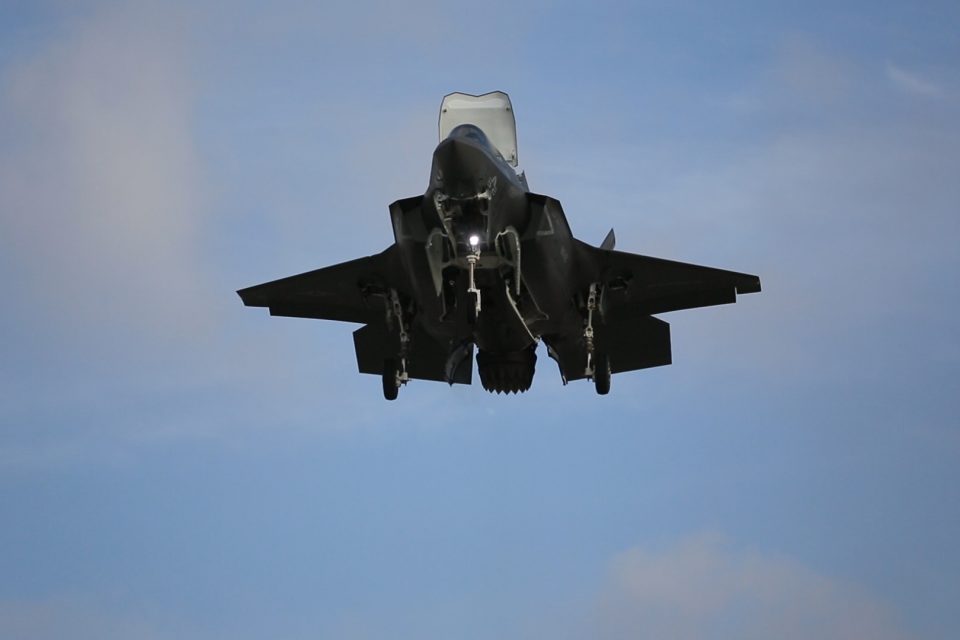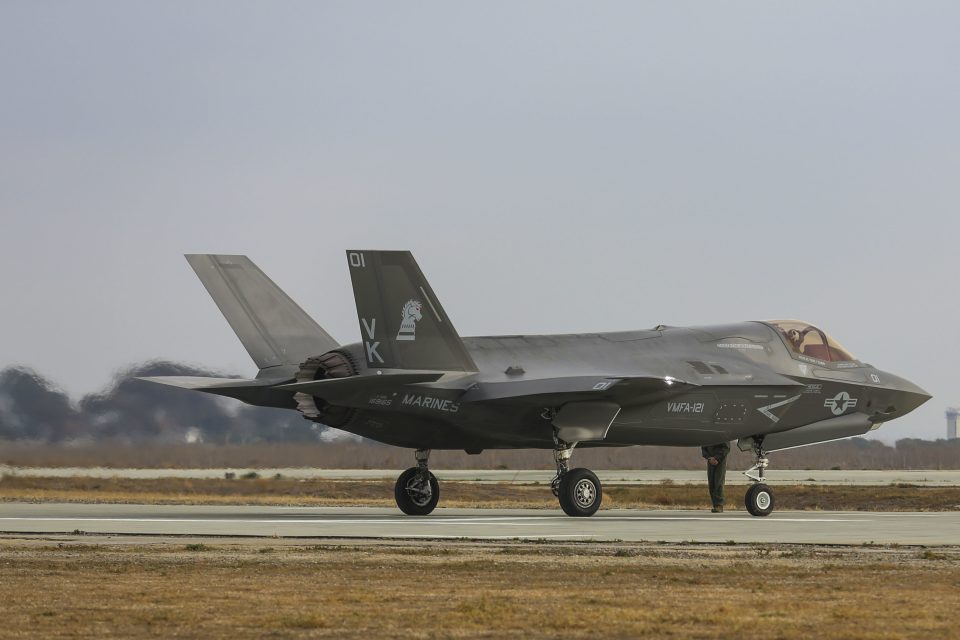12/16/2016: We have recently interviewed the CO of VMFA-121 in Yuma in early December 2016 and will shortly publish his interview.
But this story from a year ago discusses a milestone to the process of the squadron preparing for its deployment to Japan in 2017.
Marines and Sailors with the 3rd Marine Aircraft Wing (MAW) supported the 1st Marine Division during Exercise Steel Knight 2016 aboard various military installations in California, Dec. 2-16.
Exercise Steel Knight is a combined arms live-fire exercise that implements a combination of air and ground assets to complete a wide range of military operations to prepare 1st MarDiv for deployment as the ground combat element of a Marine Air-Ground Task Force (MAGTF).
Various squadrons within 3rd MAW performed more than 70 sorties ranging from external lifts, convoy escorts and casualty evacuation missions with rotary aircraft and fire support missions with the F-35B Lightning II Joint Strike Fighter to providing refueling points for air and ground assets.
“Our purpose here is to refuel the aircraft so that [the squadrons] can complete their mission, “ said Sgt. Alicia Allender a bulk fuel specialist, Marine Wing Support Squadron (MWSS) 372. “The whole steel knight operation has been a work in process, and we had to ensure we had the capabilities to refuel the aircraft and ensure there were no complications.”
Throughout the exercise, 3rd MAW units overcame logistical and natural challenges to complete their missions including Marine Fighter Attack Squadron (VMFA) 121, which is the first F-35B squadron to reach initial operating capability.
“It’s our first time taking the [F-35B] to [Marine Air Ground Combat Center Twentynine Palms] and working out of a relatively austere environment,” said Lt. Col. James Bardo, commanding officer, VMFA 121. “We’re out here in the desert, and there are some challenges with being here that we are learning about with this new airplane.”
One challenge they had to overcome was the lack of landing pads at 29 Palms.
To facilitate testing of the aircraft’s vertical take-off and landing capabilities in an expeditionary environment, MWSS 374 constructed a 204 feet by 200 feet VTOL pad at the Strategic Expeditionary Landing Field. In addition, the support squadron constructed a 150 feet by 96 feet taxiway to connect the landing zone to the main landing field and hangar.
“The primary purpose of this landing zone was to test the F-35B to ensure the pad would not melt during its VTOL,” said Lance Cpl. Stephen Garcia, a surveying and drafting specialist, MWSS-374. “It certainly passed the test.”
The landing zone served as an emergency landing area throughout Steel Knight 16 and has the potential to be used in future training, according to Capt. Jonathan H. Royer, an assistance operation officer, MWSS-374.
“This is the first time the F-35B is out here on an expeditionary landing field,” said Royer. “We built the [VTOL] Pad in the event that there is an emergency so they have more than one option to get the aircraft on the deck.”
MWSS-374 undertook the project of creating the landing zone in just under two and a half weeks, a task that was projected to take two months. The task depended on the heavy equipment required, to remove four inches of concrete before any other work could be done on the site.
“One of the biggest challenges we face in the construction of a landing zone is getting the sand to compact as needed,” said Staff Sgt. John A. Vasquez, an engineer equipment operator with MWSS-374. “It took my Marines 17 long days to ensure the pad was put together.”
Exercise Steel Knight allowed VMFA-121 the opportunity to illustrate the abilities of the F-35B to operate organically in an austere environment while helping accomplish the mission of the MAGTF.
“This is the first time that we get to truly test the capabilities of the aircraft in an expeditionary setting,” said Maj. Colin Newbold, the flight operations officer with VMFA-121. “This is going to be a real learning experience for everyone involved and will prove helpful in the future when developing tactics.”
As the exercise concludes, the 3rd MAW Marines returned to their installations to prepare for future operations.
“The lessons learned from deploying the aircraft and operating in this environment are the things we’ll take forward to further our knowledge of how we are going to deploy in support of military operations,” said Bardo.
12/16/2015: Story by Sgt. Brian Marion and Cpl. Alissa Schussing
Marine Corps Air Station Miramar / 3rd Marine Aircraft Wing


